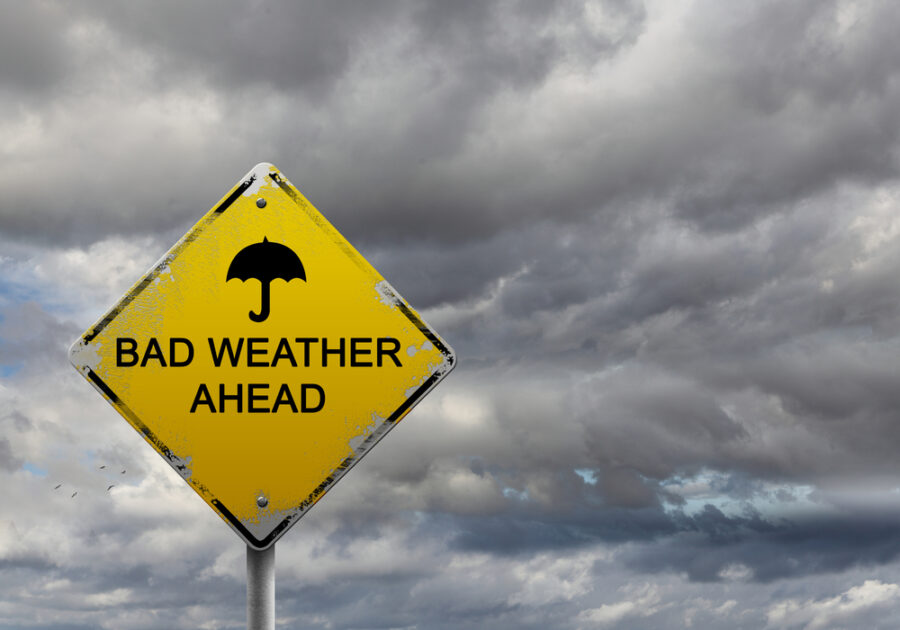Being a truck driver can be a risky job. Long hours on the road and hauling valuable freight means safety should always be number one. Whether you’re a seasoned pro or just getting started in the industry, understanding and putting into practice key safety measures can make all the difference in a successful and incident-free trip. Here are some safety tips to help you stay safe on the road.
Plan Your Trip Ahead
Trip planning is a vital tool for all truck drivers, whether new to the business or highly experienced. Proper trip planning allows you to identify potential hazards and choose the best routes for your trips. By considering road conditions, traffic patterns, and weather forecasts you can make informed decisions that steer you away from road closures, construction zones, or areas prone to severe weather. This proactive approach minimizes the chance of accidents or delays.
Also, be aware of the parking limitations along your route. Many truck stops run out of parking fast. If you plan ahead you can reserve a spot or have a backup option so you have a safe place to park. You never want to be tired and out of hours with no safe place to park.
Furthermore, trip planning allows you to schedule rest breaks along your route which is crucial for driver well-being and road safety. Fatigue is a major risk that impairs concentration and reaction times and increases the chance of accidents. By planning your trip ahead you can identify rest areas or truck stops where you can take regular breaks to combat fatigue. This strategic approach allows for adequate rest and proper sleep and keeps you more alert and better decision-making on the road. This increased safety benefits not only yourself but also other road users.
Do pre-trip and post-trip checks
Pre and post-trip checks are crucial to your safety on the road. These checks are proactive measures to identify and fix potential issues before they become major problems. By checking your equipment before and after every trip you are actively preventing accidents caused by mechanical failure. By prioritizing these checks you are not only keeping truck drivers safe but also safer roads.

Check the Weather
Checking the weather is critical for truck drivers to be safe on the road. The impact of weather on driving can’t be underestimated, it can create hazardous and unpredictable situations. By staying informed about the weather forecast you can be proactive and plan your route and adjust your driving accordingly. Severe weather events like heavy rain, snowstorms, high winds, or fog can reduce visibility, create slippery roads, and decrease traction, all of which are major risks for truck drivers. Being aware of these conditions allows you to make informed decisions such as slowing down, taking alternative routes, or finding a safe place to wait out the weather if needed.
Avoid Congestion
As a truck driver, you have a big responsibility to ensure the safe and efficient movement of goods across the country. By being proactive and avoiding traffic and taking alternative routes you can reduce the chances of accidents and create a safer road environment. By planning ahead and being up to date with traffic conditions you can have smoother journeys and less stress. As professionals, you are committed to avoiding traffic not only for your own safety but also for the overall well-being of the industry.

Use a GPS or Mapping Device
Using trucker-friendly GPS or mapping devices can help keep you safer as a truck driver by giving you accurate and up-to-date navigation information. These devices calculate the best routes taking into account road conditions, traffic congestion, and construction zones. By following the recommended routes you can avoid hazardous areas, reduce the risk of accidents, and have a smoother journey.
In addition to navigation, trucker-friendly GPS or mapping devices can be a very useful tool for trip planning. Knowing what hazards and delays are along the route will help you to plan your trip better for increased safety and efficiency.
These work great when used in conjunction with the road conditions you see and your dispatch team. Using all these resources together will help you spot outdated directions and road hazards.

Take Breaks
It’s important to take regular breaks for your safety and well-being on the road. Long periods of driving can cause fatigue, loss of focus, and impaired judgment which increases the risk of accidents. Use trucker-friendly GPS or mapping devices during trip planning to map your 30-minute and 10-hour breaks. They will show you rest areas, truck stops, and amenities along your route so you can find a place with parking, restrooms, food options, and accommodations. By planning your breaks you can prevent fatigue-related incidents.
Defensive Driving
One of the unwritten rules of the road is that other drivers will drive recklessly around you. Defensive driving is key to your safety on the road. By being vigilant and aware of other drivers actions you can avoid collisions. Keeping a safe following distance, being aware of blind spots, and not speeding are just a few ways you can practice defensive driving. Also, be aware of the road conditions around you. Anticipating other drivers’ actions can help you prevent accidents. Also always take into account the road conditions and adjust your driving accordingly, especially in adverse weather or poor road conditions.
Truck accidents are not caused by truck drivers themselves but by the dangerous driving of four-wheel vehicles that share the road with them.
Watch blind spots
Watching blind spots is crucial for truck drivers. Blind spots are the areas alongside the truck and directly behind it where other vehicles, pedestrians, and hazards can hide. Most other drivers and pedestrians are not aware of how big the blind spots are on a long-haul truck. So they will travel in your blind spots unaware of the danger that’s there. By checking these blind spots regularly you can reduce the risk of accidents and collisions caused by this hazard.
Don’t Speed
According to NHTSA, speeding is the most common driver-related factor in fatal crashes involving both big trucks and passenger vehicles, accounting for 29% of traffic fatalities in 2021. There are strict laws in place especially for semi-trucks to address the risks of speeding.
There are two types of speeding: exceeding the posted speed limit and speeding for conditions. Speeding for conditions means driving at a speed that’s above a reasonable standard for safe driving, especially in situations like icy roads, fog, construction zones, curves, and heavy traffic. Slowing down when you see potential hazards is key to maintaining vehicle control, reducing stopping distance, and keeping yourself and other motorists safe.
While it may seem necessary to speed to keep up with traffic or arrive on time, the few minutes you’ll gain are never worth risking your life and the lives of others on the road.
Don’t get distracted
Avoiding distractions while driving is important for all drivers but is more crucial for truck drivers who drive big vehicles on the road. Being safe on the road requires you to be focused and fully attentive to the task at hand. Distractions can be deadly not just for yourself but for other road users and the cargo you’re carrying. By staying focused you can anticipate hazards, react to changing traffic conditions, and make split-second decisions that can prevent accidents.
Another reason to avoid distractions while driving is to use your senses to the fullest, especially your sight and hearing. Visual distractions like checking your phone, reading maps, or adjusting in-cabin controls can take your eyes off the road for a split second and increase the risk of accidents. Distracting conversations or loud music can also impair your hearing and make it hard to hear important auditory cues like sirens or horns. By eliminating these distractions you can use your senses to the fullest and detect and react to potential hazards quickly and create a safer driving environment for yourself and everyone else on the road with you.

Have equipment to deal with changing road conditions
Having equipment to respond to changing road conditions is key to your safety on the road. As you know road conditions can change from clear and dry to inclement weather, construction zones, and unexpected obstacles. With the right equipment, you can adjust your driving strategies and take necessary precautions to reduce risk and maintain control of your vehicle.
Make sure you have an advanced navigation system with real-time traffic updates. This tool will help you anticipate and avoid traffic congestion, accidents, and road closures, and reduce delays and potential hazards. Be aware of road construction zones, temporary detours, and other obstacles that may affect your route. Plan ahead and use alternative routes when necessary so you can make informed decisions that will make the road safer.
Keep a safe distance
As a truck driver, the size and weight of your vehicle make it harder to stop in case of emergencies. By keeping a safe distance from the vehicle in front of you you give yourself time to react to any changes in traffic conditions. This extra space is more critical on highways and interstates where speeds are higher and the risk of accidents is higher. A safe following distance also reduces the likelihood of rear-end collisions which can cause severe damage to both vehicles and potentially cause chain reaction accidents.
Be ready for emergencies
Being ready for emergencies is key for truck drivers as it’s a big part of their safety on the road. As a truck driver, you must always be ready to handle unexpected situations that may happen during your trip. Being prepared means having an emergency kit within reach. This kit should have essential items like a first aid kit, a flashlight, extra batteries, reflective vests, and tools for basic repairs.
Also, truck drivers must have a clear understanding of emergency protocols and procedures. Knowing emergency contact numbers, the location of nearby hospitals and rest areas, and alternative routes can contribute to their preparedness. By having the right tools, knowledge, and resources truck drivers can respond to emergencies reduce risk, and be safe for themselves and others on the road.

Truck Stop Safety
Road safety is not the only part of driver safety. Many truck drivers have seen significant safety issues at truck stops from collisions in the parking lot to freight theft. Be cautious to avoid these.
Use Extra Care
Caution at a truck stop is key to your safety and others. These busy places can be hazardous with big vehicles, pedestrians, and obstacles all around. Slow down and control your speed within the premises. This will give you time to react to unexpected situations like pedestrians crossing your path or other vehicles maneuvering around you. By being careful and alert you can reduce the risk of collision and injury.
Park and maneuver properly in the parking lot. Be picky with your parking spot and choose one that has enough space to maneuver in and out. Consider blind spots, and overhead clearance, and avoid congested areas.
Even if you don’t plan to leave your truck opt for well-lit areas and park near the perimeter of the lot to be more visible and reduce the risk of theft or unauthorized access to your truck.
Bathroom Breaks
By planning your bathroom breaks you can choose well-lit and busy areas of the truck stop, reducing the risk of danger. This is especially important for female drivers who may feel more vulnerable in unknown surroundings.
Also having a planned route and schedule for bathroom breaks allows drivers to inform their employer or loved ones of their whereabouts, an extra layer of security. By prioritizing safety and planning ahead for bathroom breaks truck drivers can reduce the risks of truck stops and have a safer and more comfortable trip on the road.
Stay in Touch
Being in touch with your employer and loved ones can also help you reduce safety concerns at a truck stop. Your employer can inform you of safety risks in the area and help you plan your stops. Being in touch can also make sure someone always knows where you are so if you find yourself in a bad situation you can get help faster.
Trucking is a dangerous job and there are many risks on the road and at truck stops. But that doesn’t mean you can’t do anything. These are just the beginning of many tools and habits to help you stay safe.

Truck driving is a dangerous job and there are many risks that you will experience on the road and in truck stops. This does not, however, mean that there is nothing you can do. These safety tips are just a starting point for the many different tools and habits that can help you stay safe on the road.
Disclaimer:
This blog post is for informational purposes only. ShipEX makes no warranties about this information’s completeness, reliability, or accuracy. Any action you take upon the information on this website is strictly at your own risk. ShipEX will not be liable for any losses and damages in connection therewith. Furthermore, nothing in this blog alters ShipEX Policies which are subject to change without notice.
